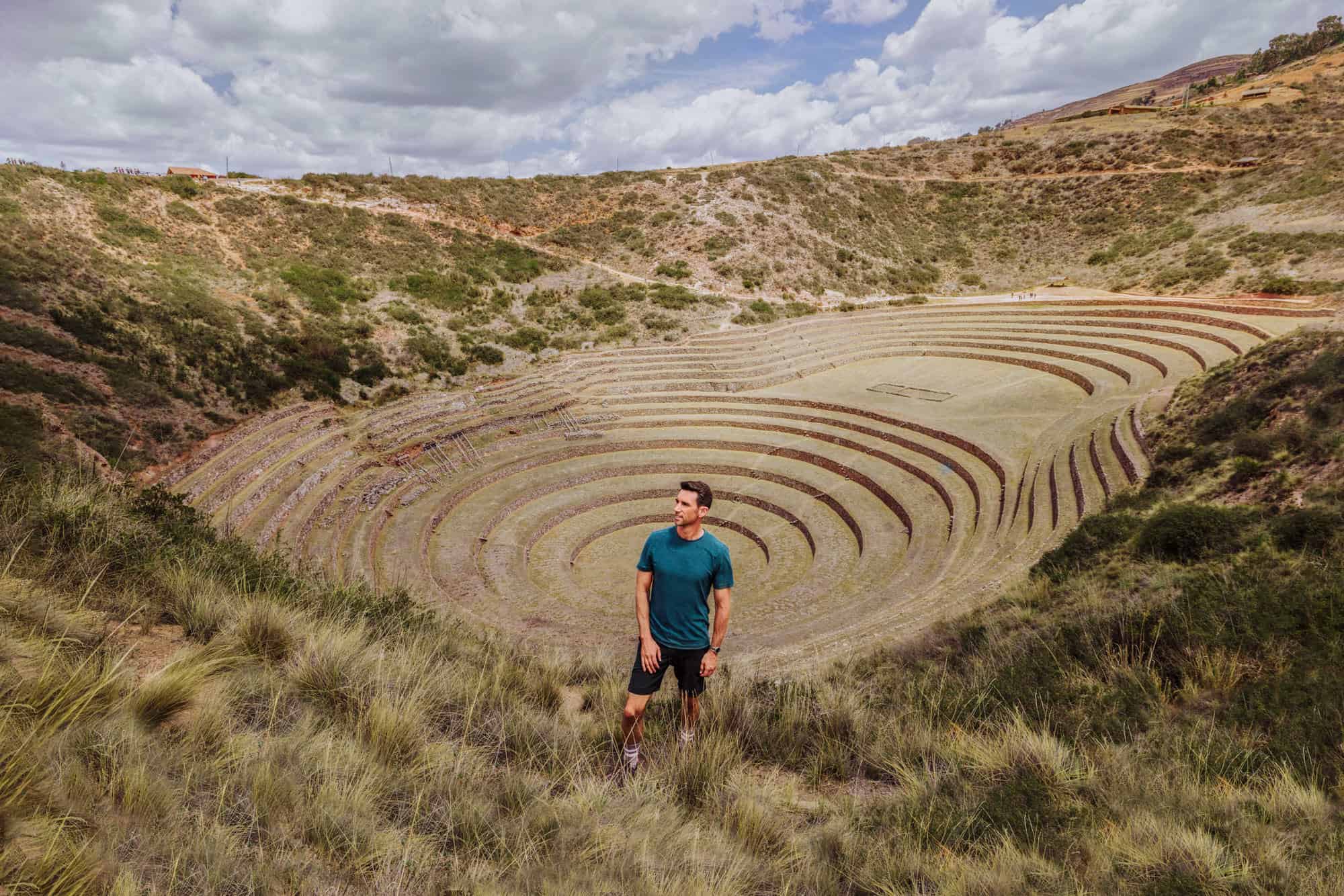Moray Peru: Ruins and Mysteries in the Sacred Valley

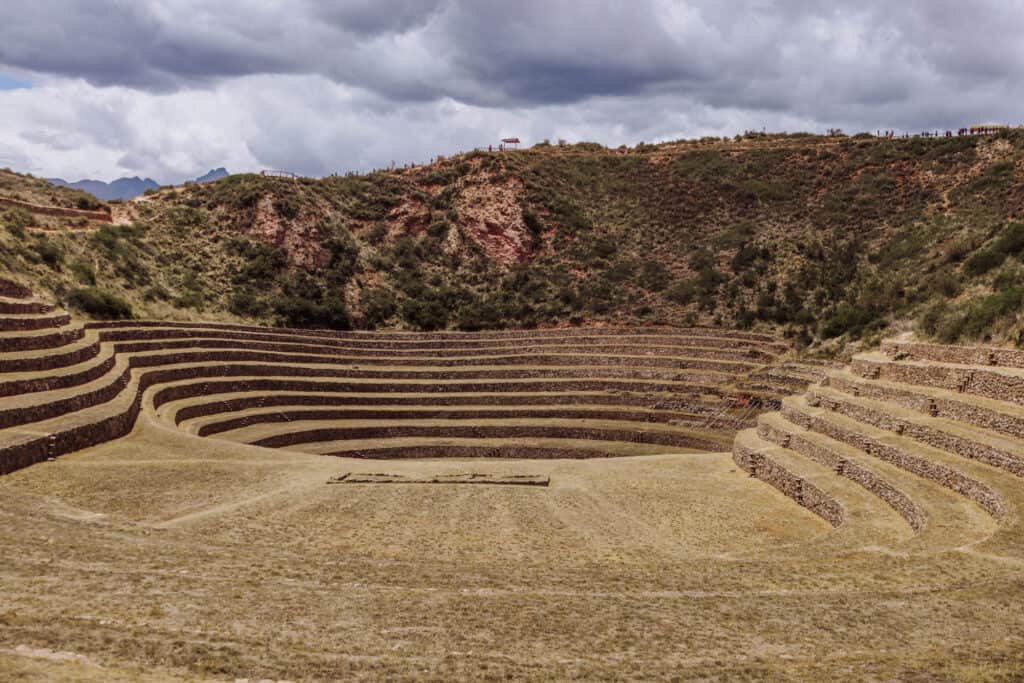
Moray is a famous archaeological site in the Sacred Valley of the Incas, near Cusco, Peru.
It’s known for its circular agricultural terraces, built around 600 years ago. Most experts believe Moray, Peru, was a kind of experimental farming laboratory, but its exact purpose is still being explored and debated.
These days, Moray makes for a great day trip if you’re in Cusco.
You can combine a stop at Moray with other sites in the area, like Maras or Ollantaytambo.
The Inca Ruins at Moray, Peru
Tours to Moray from Cusco
Driving in Cusco is challenging, so I’d recommend taking a tour from Cusco or hiring a private driver to visit Moray.
These are a few excellent, highly-rated tour options from Cusco:
➡️ Click to Book: Private Tour: Moray & Sacred Valley
- This is a private tour for your group from Cusco to Moray, Maras, and Ollantaytambo.
➡️ Click to Book: Private Tour: Moray & Maras
- Similar tour just for your private group, hitting several Inca cultural sites.
➡️ Click to Book: Moray, Pisca, Ollantaytambo
- This packs a lot into a full-day trip from Cusco!
Here’s one reason I’d much rather have someone else do the driving. Check out the windy roads in the area:
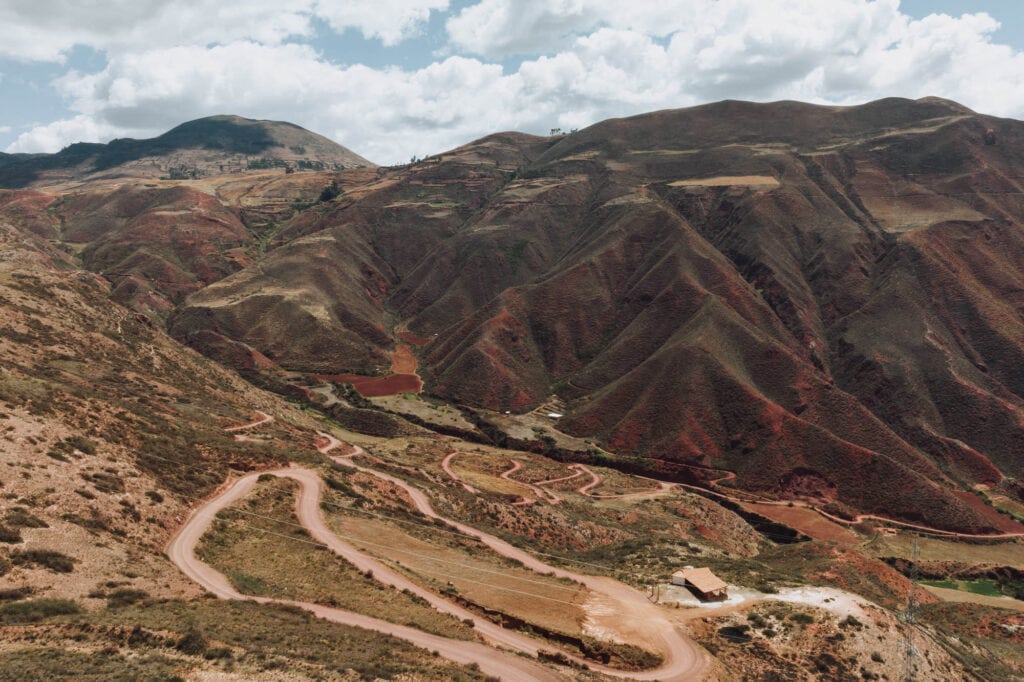
Key Facts about Moray, Peru
There are really no signs or informational billboards at Moray, so it helps to know a bit about the site before your visit. There’s an office to buy tickets at, but very little else is offered at the entry.
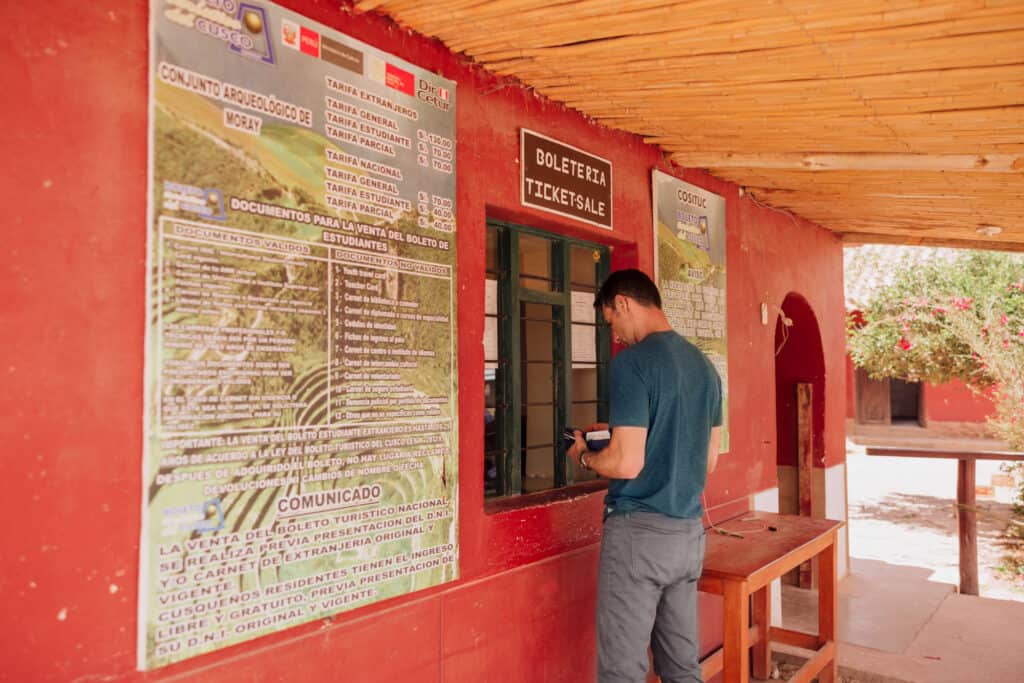
Moray is believed to have served as an important agricultural research center for the Incas, demonstrating their advanced ability to cultivate a wide variety of crops in the challenging Andean environment.
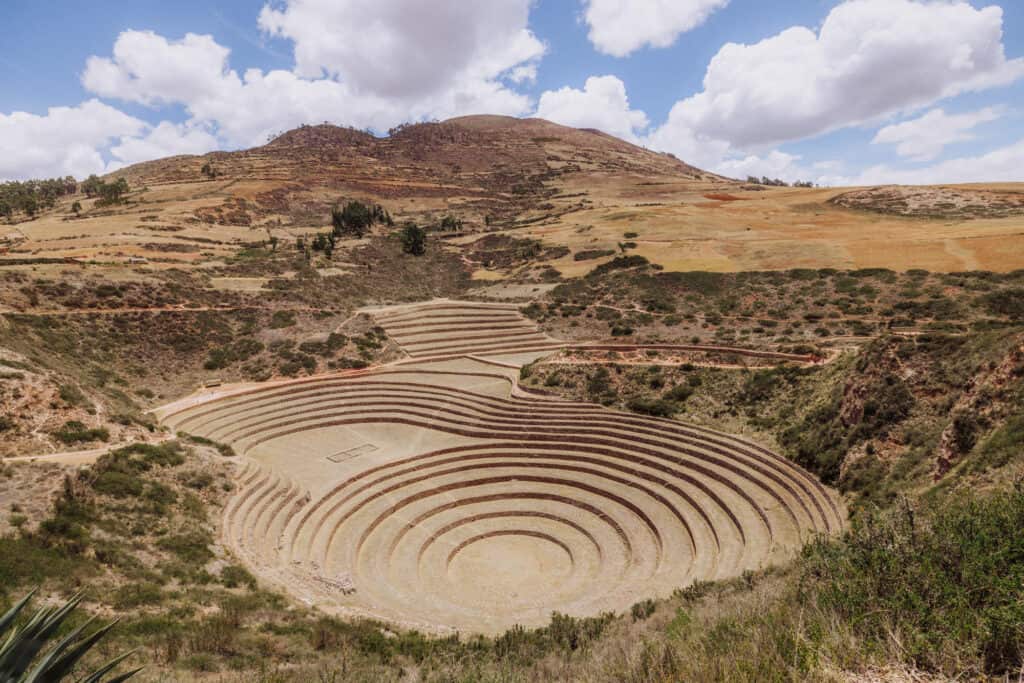
Here are some of the key facts and basics about the ruins at Moray:
- Agricultural Terraces: Moray features several concentric terraces that form circular depressions in the earth. These terraces were likely used by the Incas to experiment with crops. They used the different levels and altitudes to test adaptability to various climatic conditions.
- Microclimates: The design of the terraces at Moray creates a series of microclimates, with temperature differences of up to 15°C (27°F) between the top and bottom terraces. This setup allowed the Incas to simulate various environmental conditions and test the crops at different levels. Their farmers would use the lessons learned in their fields at various altitudes.
- Architectural Engineering: The precision and ingenuity of the agricultural terraces at Moray showcase the advanced engineering capabilities of the Inca civilization.
- UNESCO World Heritage Site: Moray, along with other Inca sites in the Cusco region, is designated as a UNESCO World Heritage Site. Its preservation and conservation are of global importance, emphasizing the historical and cultural significance of the Inca civilization and its contributions to agricultural innovation.
Moray, Peru: Location
This map will give you a good idea about the location of the ruins, which are west of Cusco. You can also see how close Moray is to Maras:
Visiting Moray, Peru
Moray is only about a 30-mile drive from Cusco. With no traffic issues, it will take about 70 to 90 minutes to get there.
It’s likely more cost-efficient (and much easier) to hire a driver for the day, or take a tour from Cusco. Navigating the region’s roads is a challenge!
Cost / Entry Fee to Moray
You’ll have to purchase a tourist ticket for Moray, which costs 70 Soles. It’s the equivalent of just less than $20 USD.
Moray is on the same ticket as Ollanaytambo and Chinchero. The pass is good for two days, which will allow you to see more Inca sites in the region.
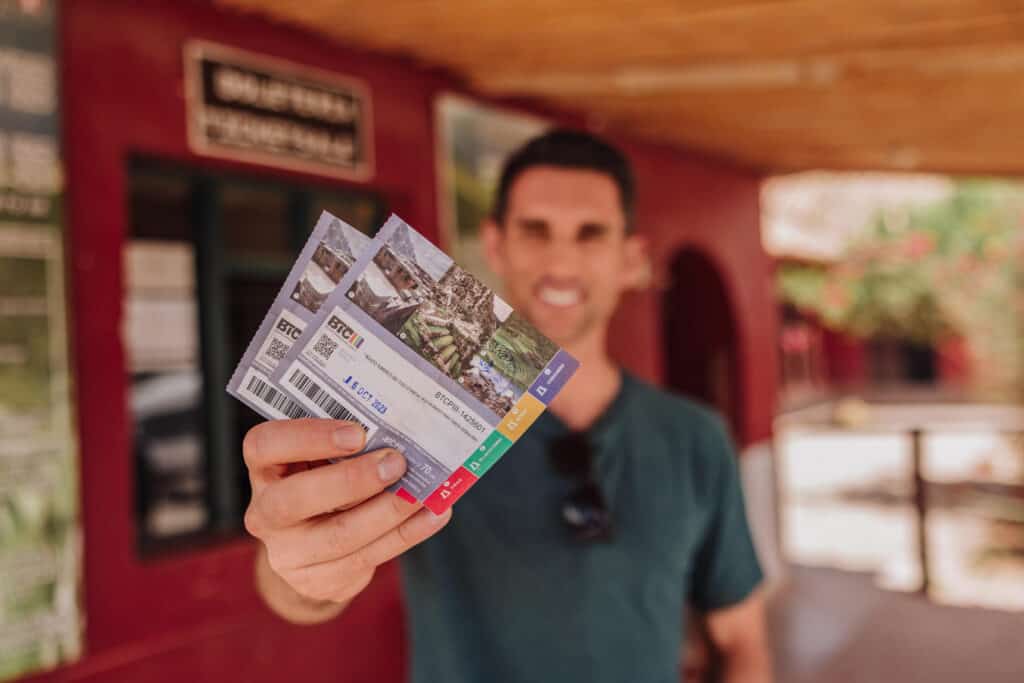
Guides and Information
As I said, there really isn’t much information at all at the Moray ruins. You will likely find guides at the entrance, willing to give you a tour. They’ll likely only charge the equivalent of $10 or $20.
Hiking Around at Moray
The main viewpoint is just off the parking lot, and it gets very crowded.
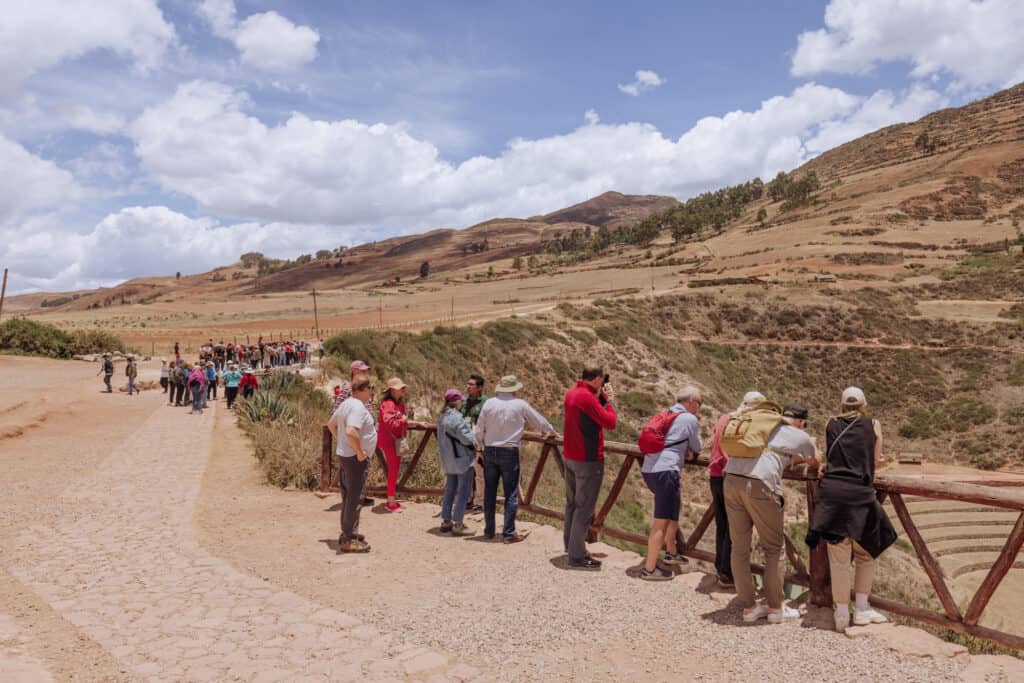
You can easily escape the crowds by hiking around the circular terraces. While the bottom area is restricted, you have access to much of the site.
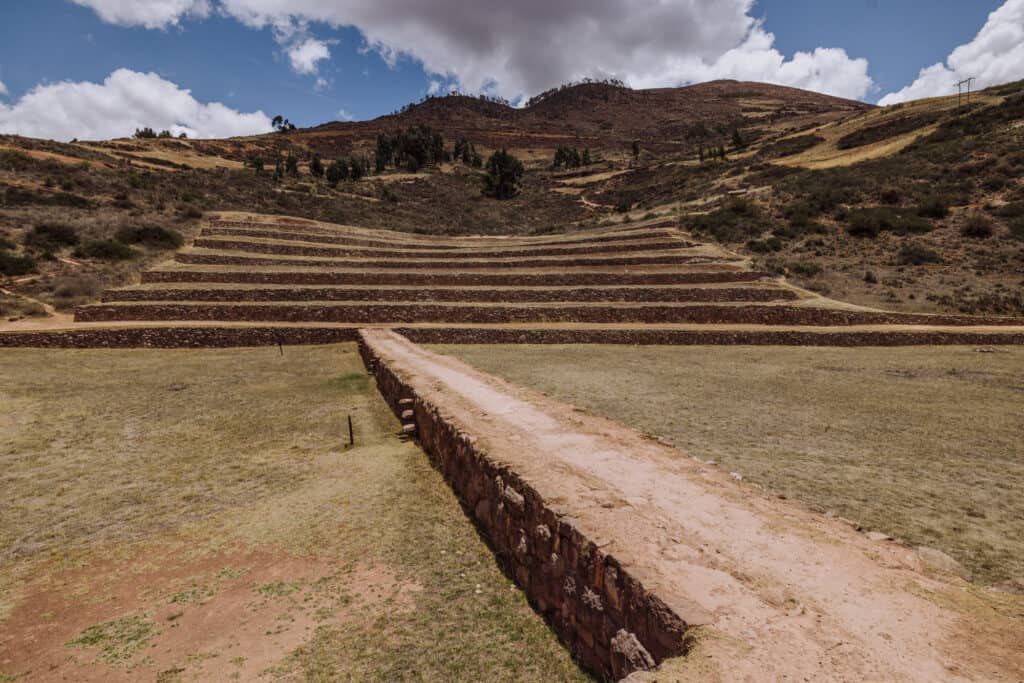
They allow you to get up close to the ruins, and you’ll likely find the trail around them largely empty.
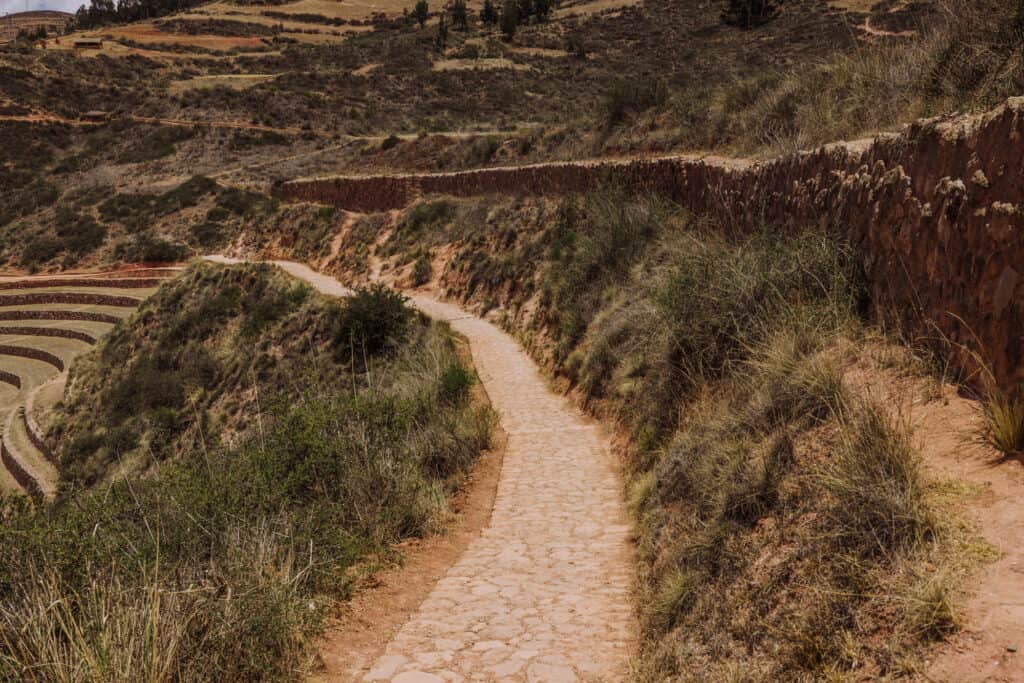
The Ag Lab at Moray
At first glance, Moray appears as a collection of circular depressions in the earth, forming several terraced levels that resemble a gigantic amphitheater.
A closer examination reveals the purpose and sophistication behind these seemingly mundane depressions. Scholars believe that the Incas used Moray as an agricultural laboratory, experimenting with various crops and adapting them to different microclimates.
The terraces at Moray are constructed in a series of concentric circles, each with its own microclimate, which is created by the varying depths and orientation of the terraces.
They’re deceivingly large. From a distance, each level appears to be just a few feet apart. Up close, you can see – each level is about three meters apart. Stone steps were built into the terraces, most of which are now off-limits.
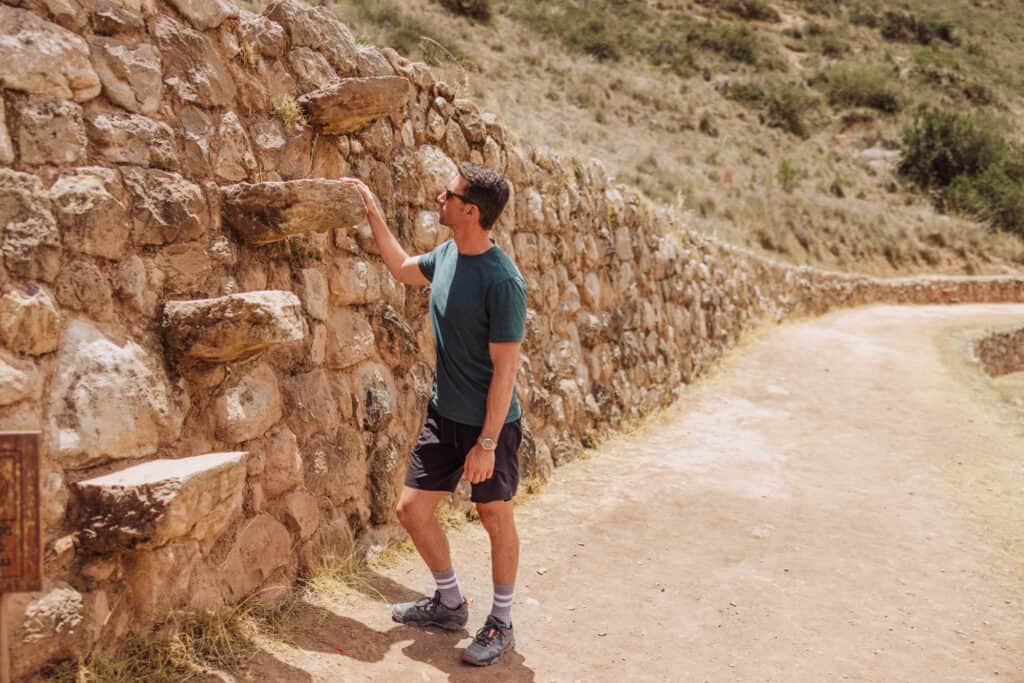
The temperature differences between the top and bottom terraces mimic various ecological zones found throughout the Inca Empire. This setup allowed the Incas to test and cultivate crops at different altitudes and in diverse climatic conditions, providing valuable insights into which crops were best suited for specific environments.
The construction of the terraces required a deep understanding of soil management, water drainage, and agricultural techniques. The Incas engineered a sophisticated irrigation system that efficiently distributed water throughout the terraces, ensuring optimal growing conditions for the crops under study.
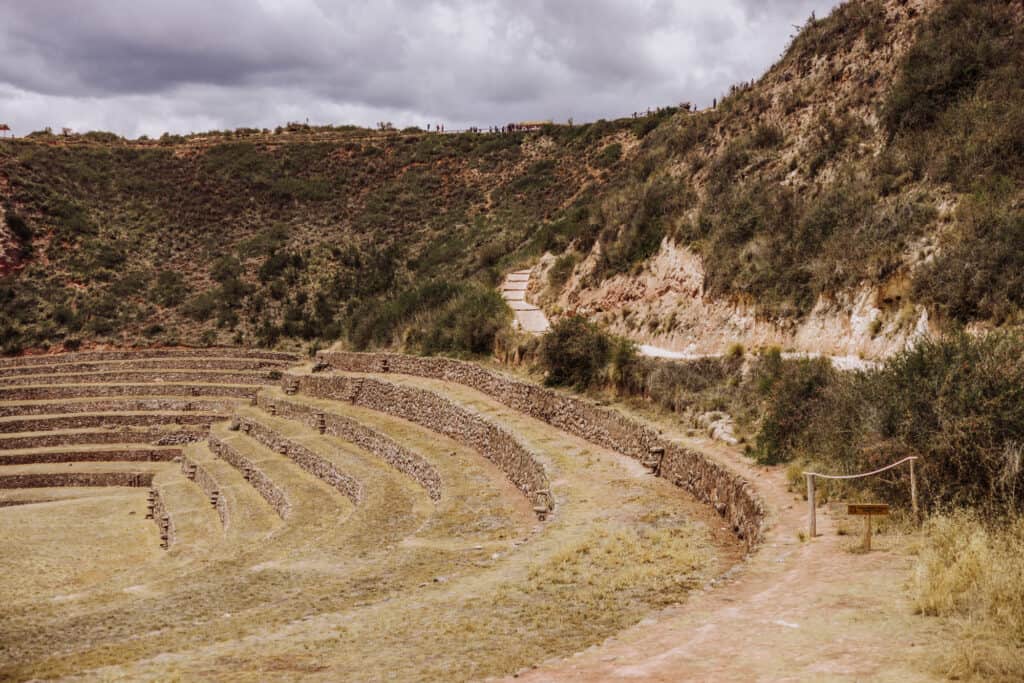
When Were the Terraces Built in Moray, Peru?
The exact date of the construction of the terraces at Moray by the Incas remains a subject of scholarly debate and historical analysis.
While there is no precise consensus, it’s generally believed that the terraces were built during the height of the Inca Empire, which flourished from the 15th century to the early 16th century.
Most researchers suggest that the construction of the Moray terraces likely took place between the 1400s and early 1500s, during the reign of the Inca Emperor Pachacuti or his successors.
Other Theories About the Moray Ruins
Aside from the agricultural experimentation theory, several other theories and speculations have emerged regarding the purpose and function of the Moray terraces.
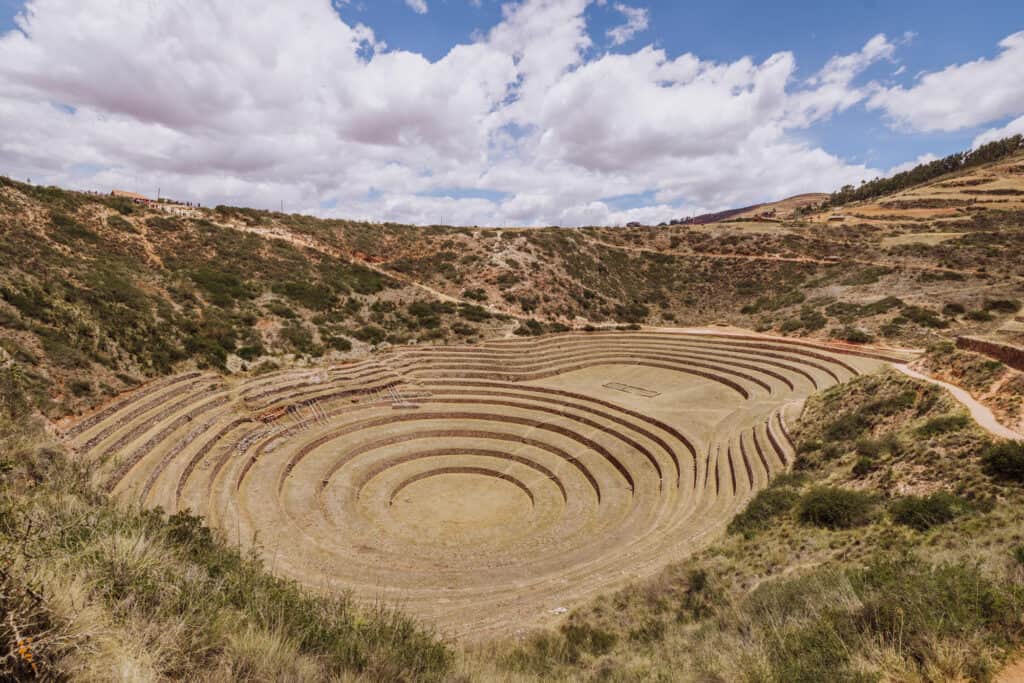
While these theories may not all have concrete evidence, they contribute to the diverse interpretations surrounding this enigmatic archaeological site.
Some of the other theories about Moray include:
- Ritual and Ceremonial Site: Some researchers propose that Moray had a ceremonial or ritualistic significance for the Incas. The circular terraces’ design has led to speculation that the site was used for religious ceremonies, possibly related to agricultural rituals, fertility rites, or astronomical observations. The alignment of the terraces with celestial events has led to theories about the Incas’ deep understanding of astronomy and their reverence for the cosmos.
- Amphitheater or Meeting Place: Another theory suggests that Moray functioned as an amphitheater or meeting place for communal gatherings and social events. The tiered terraces could have accommodated large groups of people for various gatherings, celebrations, or ceremonies, serving as a central location for community activities and cultural events.
- Healing and Spiritual Center: Some hypotheses propose that Moray was used as a healing and spiritual center by the Incas. The site’s unique microclimates may have been utilized for therapeutic purposes, with the Incas using the different temperatures and environments for medicinal plant cultivation and natural healing practices.
- Astronomical Observatory: Certain interpretations suggest that Moray was utilized as an astronomical observatory by the Incas. The terraces’ alignment with specific celestial events and the sun’s movement throughout the year has led some researchers to propose that the site was used for observing astronomical phenomena and celestial alignments. This theory emphasizes the Incas’ advanced knowledge of astronomy and their use of celestial observations in agricultural planning and religious rituals.
While these theories offer intriguing perspectives on the possible functions of Moray, the precise purpose of the site remains a subject of ongoing research and debate.
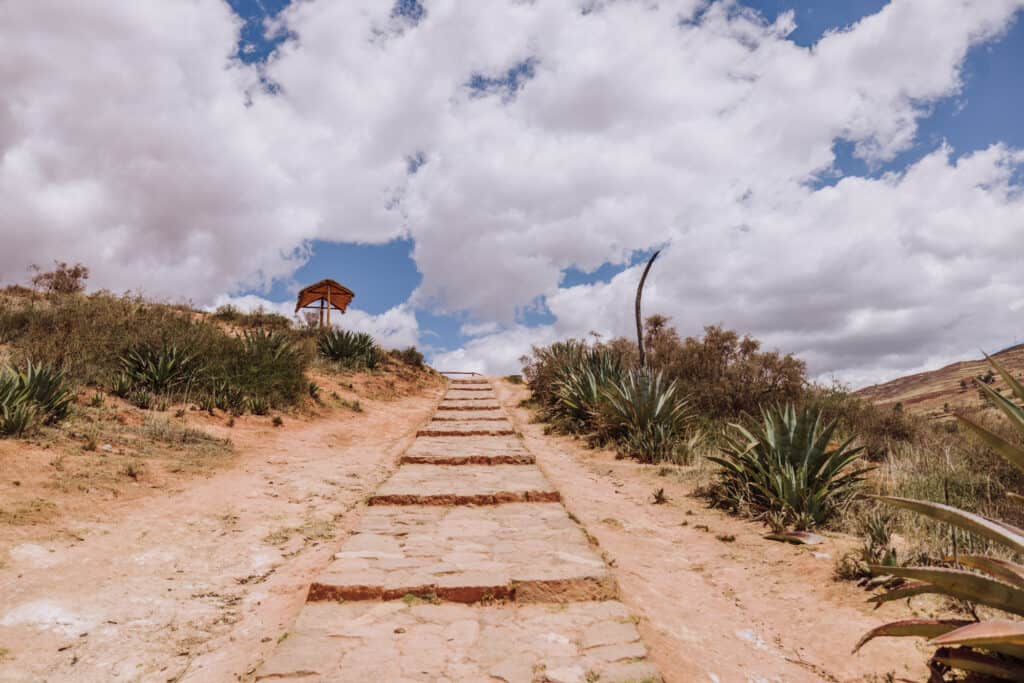
The Best Time to Visit Moray, Peru
The best time to visit Moray, Peru, and its surrounding areas in the Sacred Valley typically aligns with the dry season, which spans from May to September.
The dry season brings mild temperatures and lower humidity, creating comfortable conditions for hiking around without muddy trails.
Mornings and evenings can be chilly, so dress in layers at Moray and other sites in the region.
Tourist season peaks in the summer months, from June through August, so expect larger crowds to be at the sites in the Sacred Valley.
For me, that makes a May or September visit ideal. The weather is still great, and mostly dry, and the crowds are much smaller.
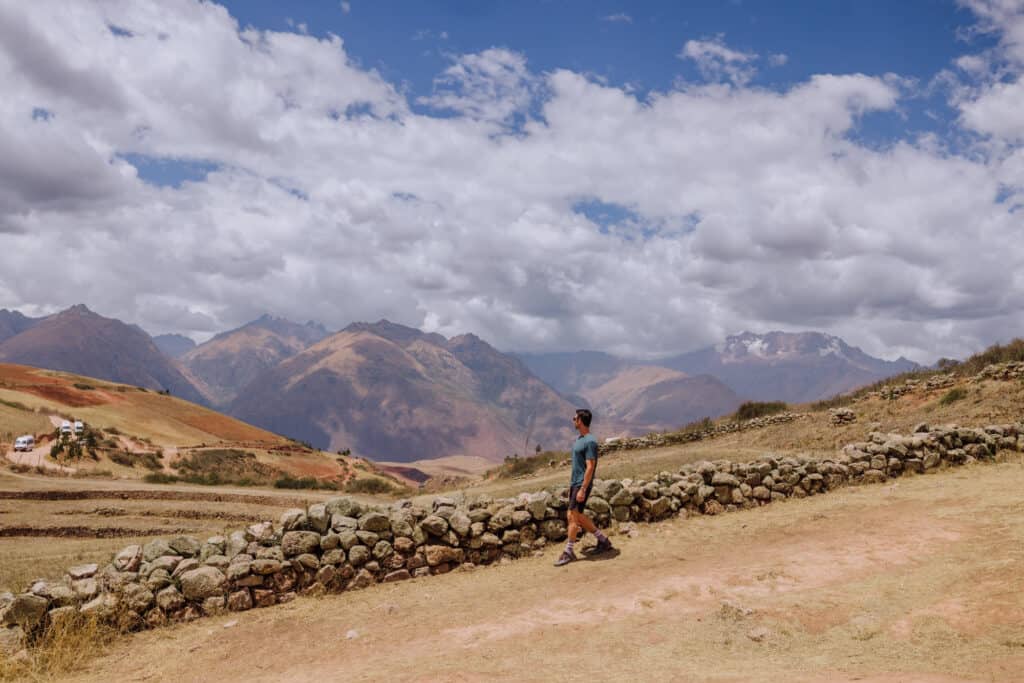
Moray to Maras: The Salt Mine
If you make the trip to Moray, Peru, consider a stop nearby at another fascinating place in the region.
The Maras Salt Mines, known as Salineras de Maras, are only a few miles away.
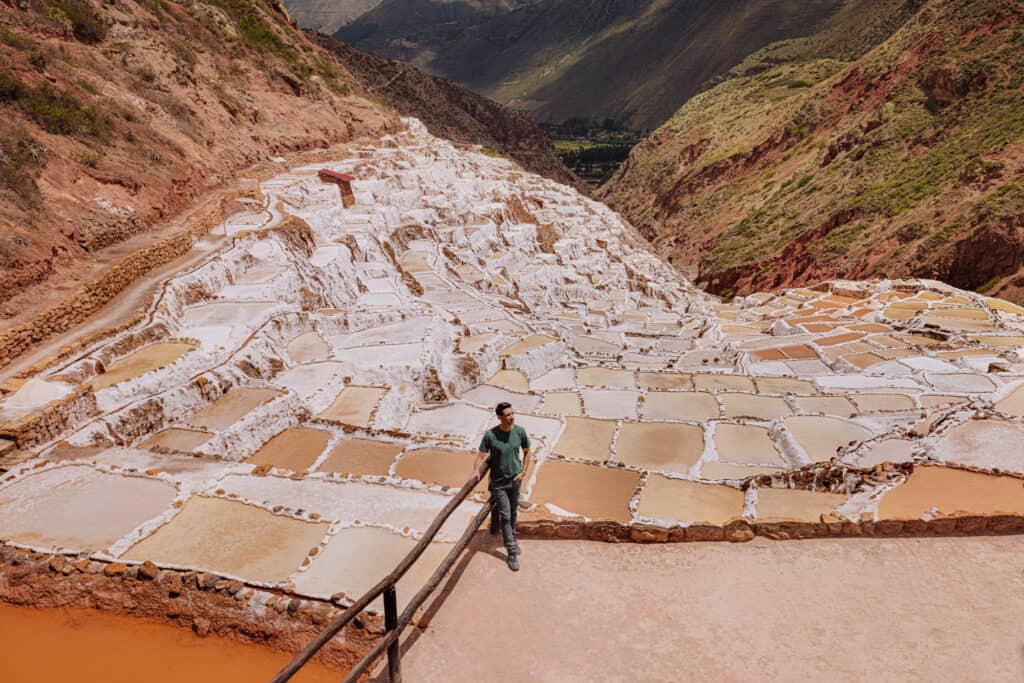
It’s owned by a private company, but you can visit the vast network of salt evaporation ponds which are believed to date back to pre-Inca times!
They create a unique landscape that’s been an essential part of the local economy and culture for centuries.
The salt mines consist of thousands of individual terraced salt pans or pools that cascade down the hillside, creating a mesmerizing patchwork of white and brown rectangles in the valley.
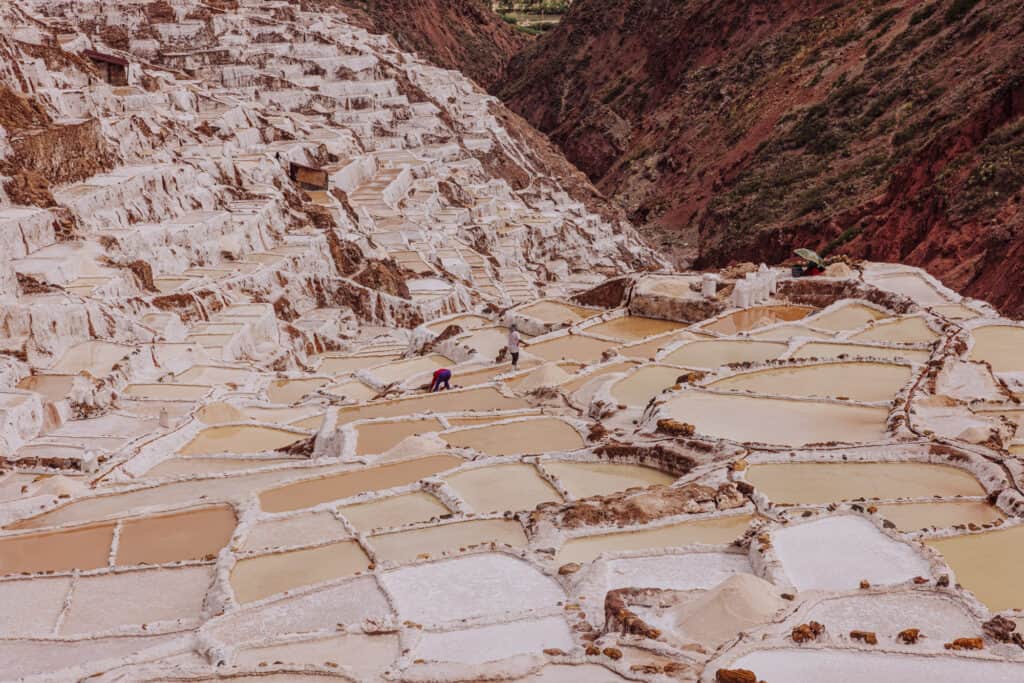
The local community in Maras maintains and operates the salt pans using methods that have remained largely unchanged for centuries.
The salt pans are fed by a natural saltwater spring that emerges from the mountainside. The spring’s water is channeled into the various terraced ponds, where it gradually evaporates under the sun, leaving behind a crystallized layer of salt.
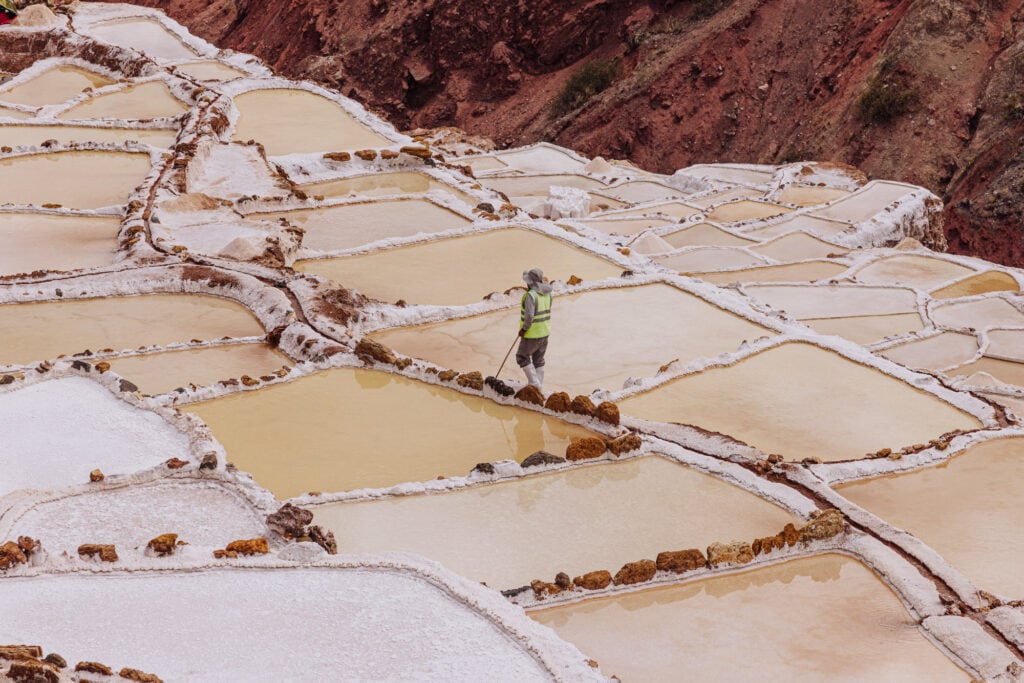
Visitors to the Maras Salt Mines can explore the intricate network of salt pans, witness the labor-intensive process of salt production, and learn about the traditional methods employed by the local community.
The locally harvested salt makes a great souvenir, and also supports the local economy.
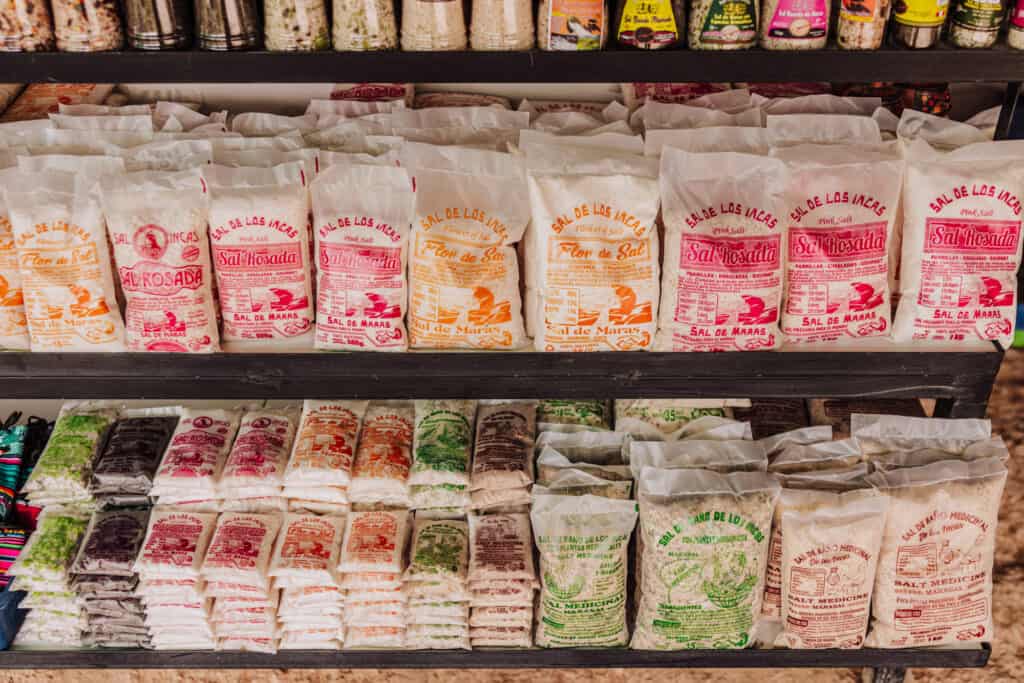
Other Sites to See Near Moray, Peru
In addition to the captivating archaeological site of Moray and the ancient salt mines at Maras, the Sacred Valley is a beautiful area full of other sites to visit.
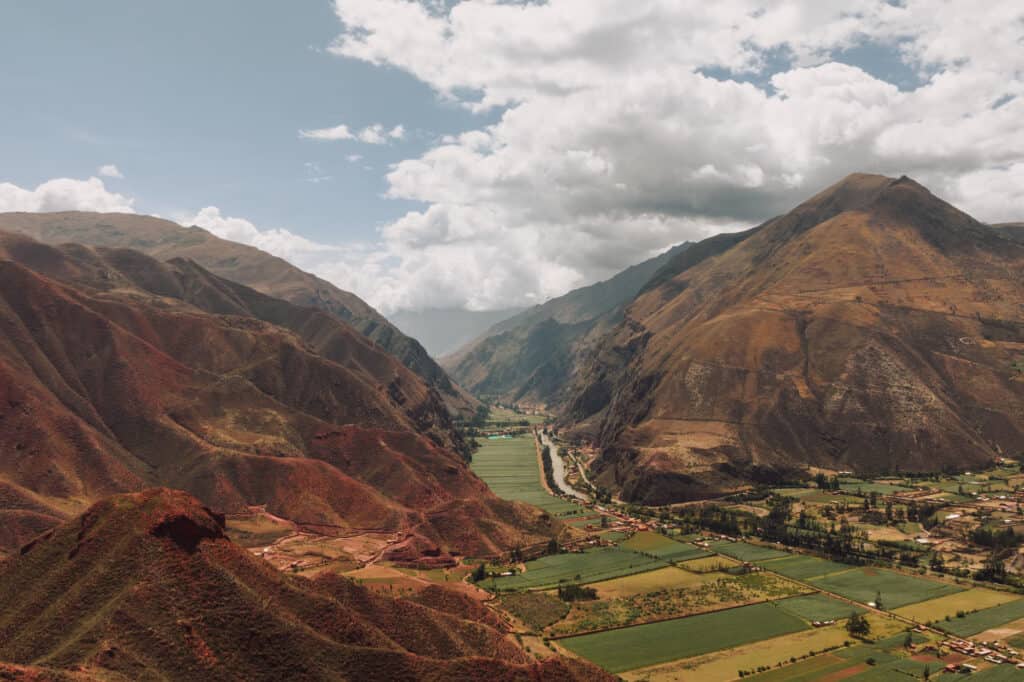
Here are a few other notable sites to consider visiting:
- Ollantaytambo [pictured below]: Your tourist pass from Moray will also get you into Ollantaytambo’s ruins. Ollantaytambo itself is a great town, known for its well-preserved terraces, temples, and fortress. It served as a strategic stronghold during the Inca resistance against the Spanish conquistadors.
- Pisac: The archaeological site of Pisac is renowned for its expansive terraces, ancient temples, and well-preserved Inca ruins. The site also hosts a vibrant traditional market where visitors can explore local handicrafts, textiles, and fresh produce, providing a rich cultural experience.
- Chinchero: This small Andean village is famous for its traditional textile weaving and market, offering visitors an opportunity to witness local artisans demonstrating ancient weaving techniques and selling intricately crafted textiles. Your Moray tourist pass will also get you admission into Chinchero.
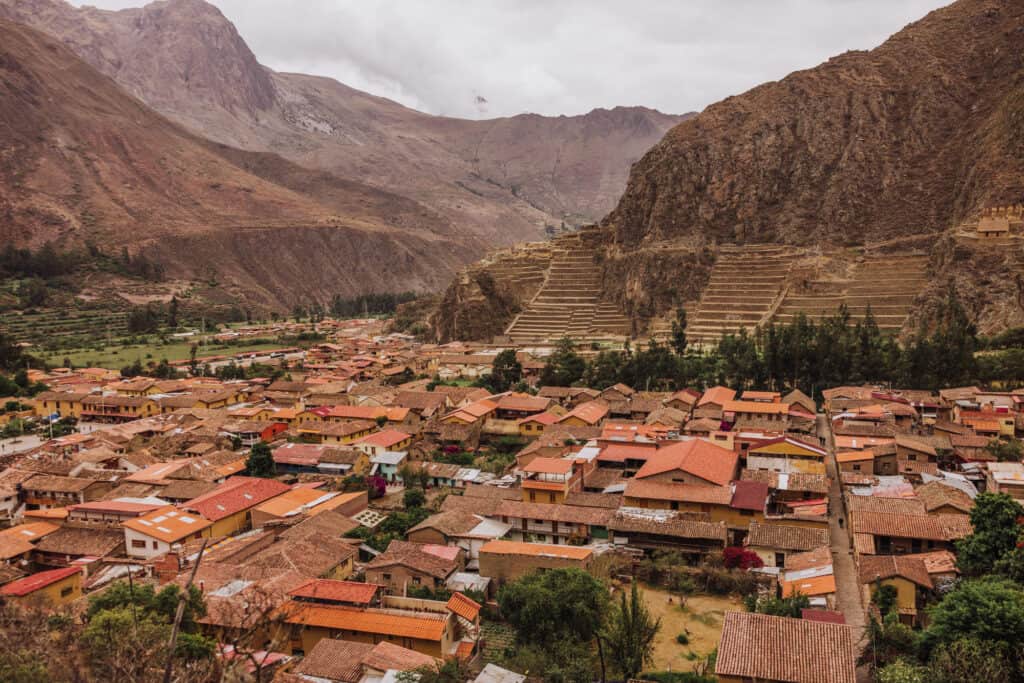
FAQs About Moray, Peru
Let’s go over a few remaining frequently-asked-questions about Moray. Most of these were already answered up above.
What’s the cost to visit the Inca ruins at Moray?
The cost of a tourist pass to get you into Moray, Ollantaytambo, and Chinchero is 70 Soles, which is $18-$20 USD. The pass is good for two days.
How far is Moray from Cusco?
Moray is about a 50-mile drive from Cusco, which should take just over one hour.
What else is at Moray?
It’s pretty much just the ruins. There’s not much of a town, though you’ll find local people selling souvenirs and drinks near the parking lot.
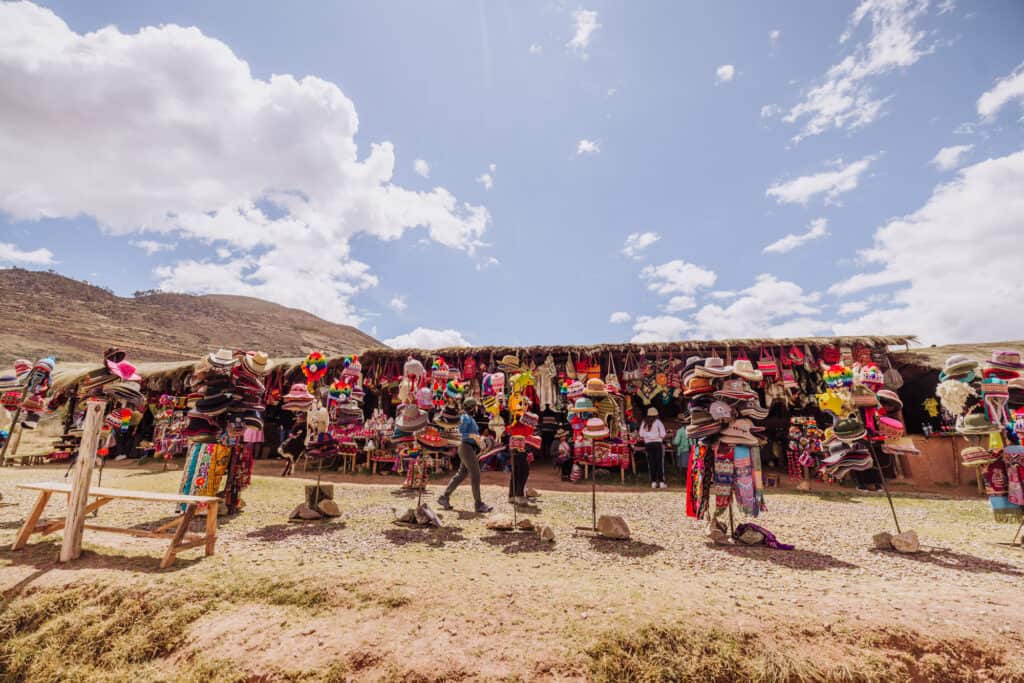
What’s the best time to visit Moray, Peru?
While June, July, and August are the sunniest and driest, they also bring the biggest tourist crowds. Consider a shoulder-season visit in May or September.
What’s the elevation or altitude at Moray?
Moray sits about 11,500 feet above sea level, which is similar to the city of Cusco.
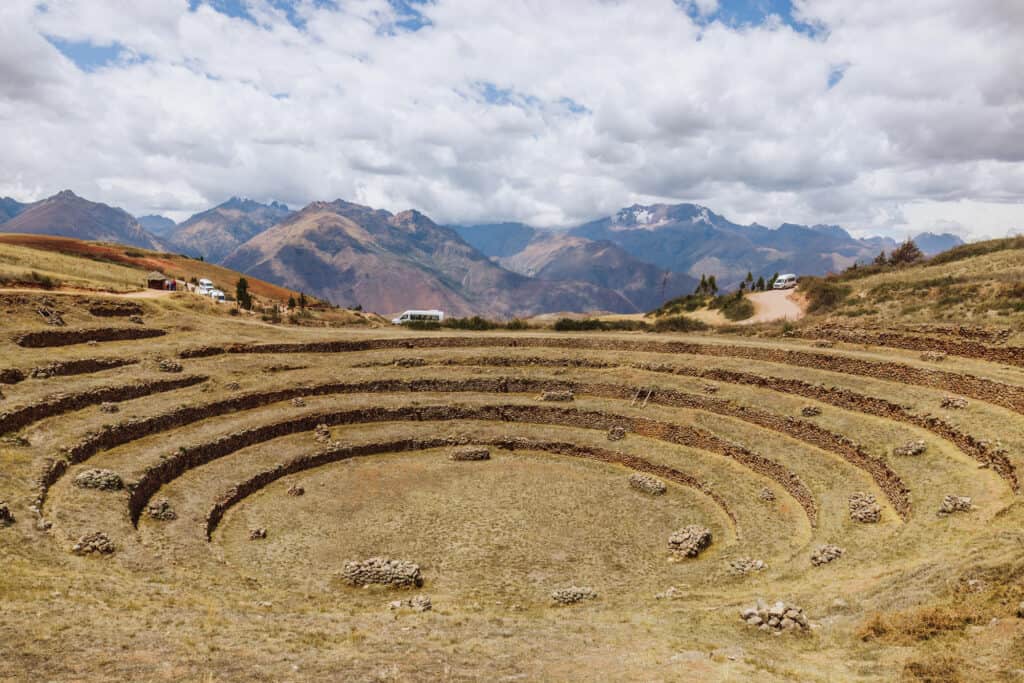
Wrap: Is a Visit to Moray, Peru Worth It?
Visiting Moray provides a unique opportunity to appreciate the remarkable agricultural and engineering practices of the Incas!
It’s definitely worth a stop to explore, as part of a day (or more) in the Sacred Valley.
Today, Moray stands as a compelling archaeological site (and UNESCO World Heritage Site!), offering a glimpse into the Inca Empire’s ingenuity and advanced agricultural knowledge.
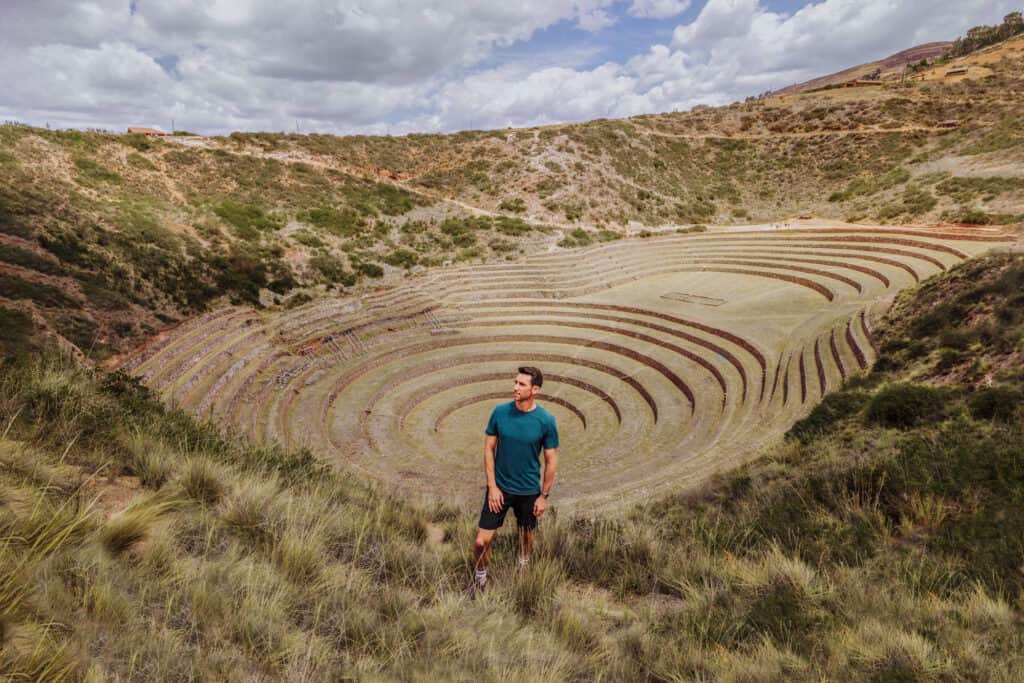
Check out our other posts on the Cusco region!
🇵🇪 Aguas Calientes: Machu Picchu Pueblo
🇵🇪 Cusco to Machu Picchu: Trains, Tours, & More
🇵🇪 Pallay Punchu: The New Rainbow Mountain
